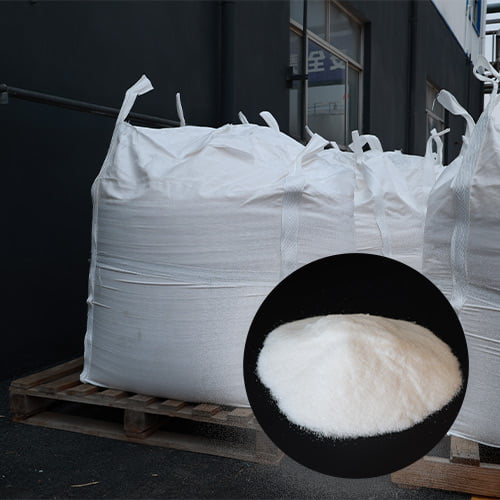Введение
Electrolysis is a powerful and versatile process used in various industrial applications. When it comes to sodium formate, electrolysis plays a crucial role in generating useful chemicals and gases that are integral to many industrial operations. This blog post will delve into the applications of the electrolysis of sodium formate, examining its benefits, specific uses in different industries, and the overall impact on modern industrial practices.
Understanding Electrolysis of Sodium Formate

The Basics of Electrolysis
Electrolysis involves using an electric current to induce a chemical reaction that would not occur spontaneously. In the case of sodium formate (NaCHO2), the process decomposes the compound into useful products through the application of an electric current.
The Electrolytic Process
- Electrolyte: Aqueous solution of sodium formate.
- Electrodes: Typically, a platinum or graphite anode and a copper or graphite cathode.
- Power Supply: Direct current (DC) to drive the reaction.
Chemical Reactions
- Anode (Oxidation):
[ \text{HCOO}^- \rightarrow \text{CO}_2 + \text{H}^+ + e^- ] - Cathode (Reduction):
[ 2\text{H}_2\text{O} + 2e^- \rightarrow \text{H}_2 + 2\text{OH}^- ] - Overall Reaction:
[ \text{HCOONa} \rightarrow \text{CO}_2 + \text{H}_2 + \text{NaOH} ]
Key Products from the Electrolysis of Sodium Formate
Hydrogen Gas (H2)
Hydrogen is a clean fuel and a key component in various chemical processes.
Carbon Dioxide (CO2)
Carbon dioxide can be utilized in a range of industrial applications, including carbon capture and storage (CCS).
Sodium Hydroxide (NaOH)
Sodium hydroxide, also known as caustic soda, is an essential chemical in many industries.
Industrial Applications of Electrolysis of Sodium Formate
Производство водорода
Hydrogen as a Clean Fuel
Hydrogen produced via the electrolysis of sodium formate is a clean energy source that can be used in fuel cells for powering vehicles, generating electricity, and other energy applications.
Химический синтез
Hydrogen is a critical reagent in the synthesis of ammonia for fertilizers, methanol production, and various other chemical manufacturing processes.
Carbon Dioxide Utilization
Carbon Capture and Storage (CCS)
The carbon dioxide produced can be captured and stored underground, helping to reduce greenhouse gas emissions and combat climate change.
Enhanced Oil Recovery (EOR)
In enhanced oil recovery, carbon dioxide is injected into oil fields to increase oil extraction efficiency.
Sodium Hydroxide Applications
Chemical Manufacturing
Sodium hydroxide is widely used in the production of paper, textiles, and various chemicals, including detergents and pharmaceuticals.
Очистка воды
It is also employed in water treatment facilities to control pH levels and purify water.
Comparison of Electrolysis Applications in Different Industries
| Промышленность | Key Product(s) | Primary Application | Преимущества |
|---|---|---|---|
| Энергия | Hydrogen | Fuel cells, electricity generation | Clean energy, reduced emissions |
| Химический синтез | Hydrogen | Ammonia and methanol production | Efficient production of essential chemicals |
| Environmental | Carbon Dioxide | Carbon capture and storage (CCS) | Mitigation of greenhouse gas emissions |
| Нефти и газа | Carbon Dioxide | Enhanced oil recovery (EOR) | Increased oil extraction efficiency |
| Manufacturing | Sodium Hydroxide | Production of paper, textiles, detergents, pharmaceuticals | Wide range of industrial uses |
| Очистка воды | Sodium Hydroxide | pH control, water purification | Improved water quality, safety |
Advantages of Using Electrolysis for Sodium Formate
Clean Energy Production
The electrolysis of sodium formate produces hydrogen, a clean and sustainable energy source.
Versatile Industrial Applications
The process generates multiple useful products, including hydrogen, carbon dioxide, and sodium hydroxide, each with broad industrial applications.
Экологические преимущества
Using electrolysis for sodium formate can help reduce carbon emissions through carbon capture and storage, contributing to environmental sustainability.
Efficiency and Scalability
Electrolysis can be scaled to meet industrial demands, making it an efficient process for producing high-purity chemicals and gases.
Проблемы и соображения

Потребление энергии
Electrolysis requires significant electrical energy, which can be a limiting factor if the energy is not sourced from renewable resources.
Cost of Equipment
High-quality electrodes and power supplies are necessary, which can increase the initial setup costs.
Process Optimization
Optimal conditions, including temperature, concentration, and current density, are critical for maximizing efficiency and yield.
Вывод
The electrolysis of sodium formate offers a range of benefits across various industries, from clean energy production to environmental sustainability. By understanding the process and its applications, industries can leverage this technology to improve efficiency, reduce emissions, and produce essential chemicals and gases. As technology advances, further optimizing the electrolysis of sodium formate will continue to enhance its industrial applications and environmental impact.
Часто задаваемые вопросы
What is the primary benefit of the electrolysis of sodium formate?
The primary benefit is the production of useful chemicals and gases, including hydrogen, carbon dioxide, and sodium hydroxide, which have numerous industrial applications.
How is hydrogen produced from sodium formate used in industry?
Hydrogen is used as a clean fuel in fuel cells, for electricity generation, and as a reagent in chemical synthesis processes.
What are the environmental benefits of this process?
The process helps reduce greenhouse gas emissions through carbon capture and storage, and produces hydrogen, a clean energy source.
How does sodium hydroxide benefit the manufacturing industry?
Sodium hydroxide is essential in the production of paper, textiles, detergents, and pharmaceuticals, contributing to various manufacturing processes.
What are the challenges of the electrolysis process?
Challenges include high energy consumption, the cost of equipment, and the need for process optimization to achieve maximum efficiency.



